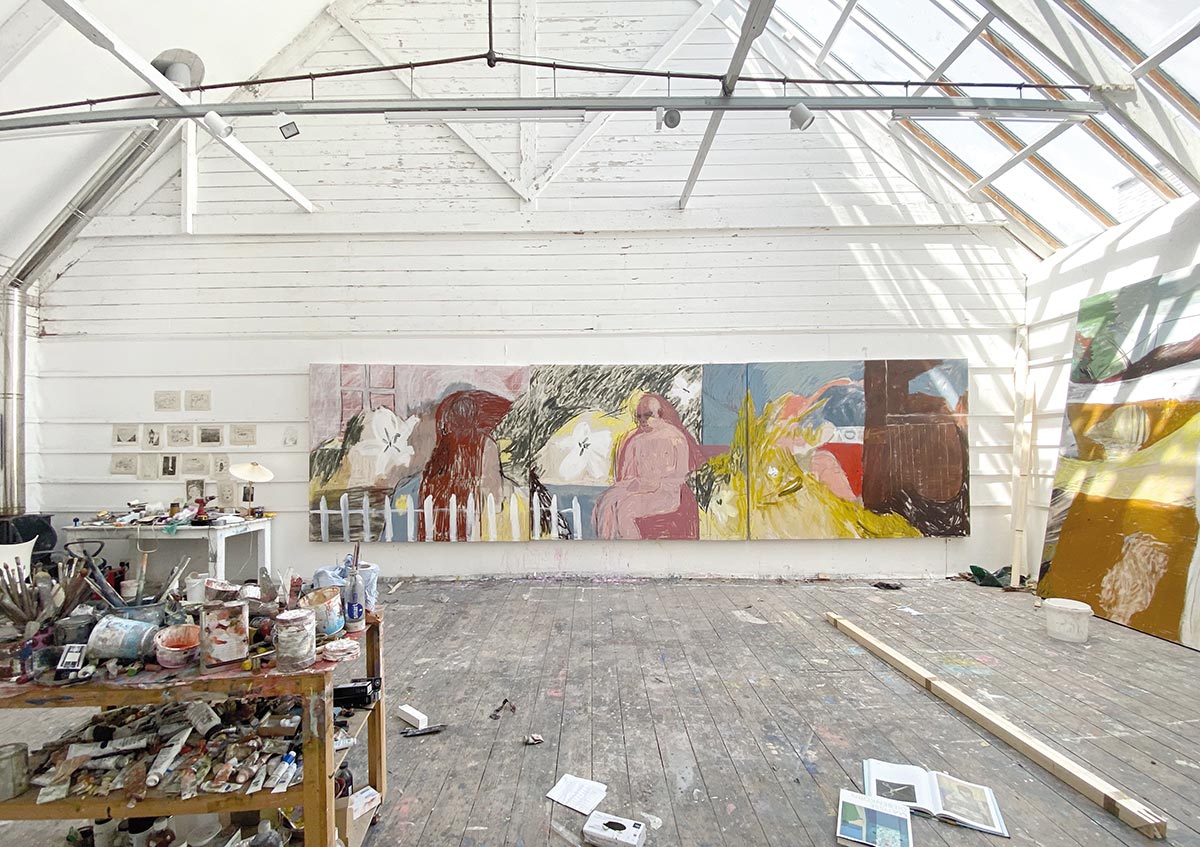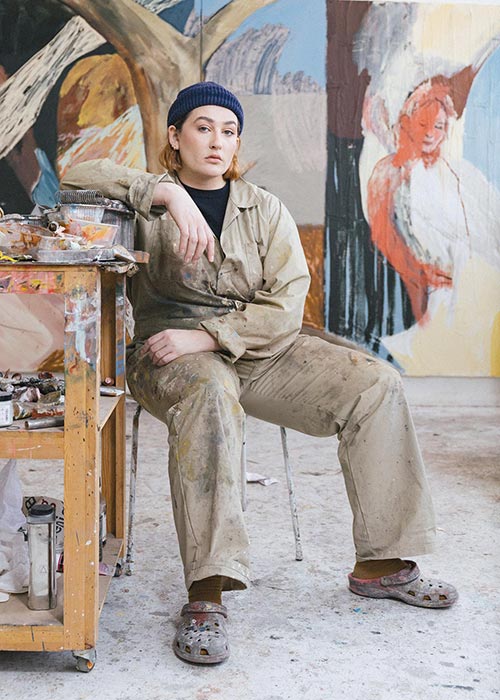PHOTOGRAPHY BY SAM HYLTON
“An encounter can be by chance. It can be romantic or hostile, abrupt, a confrontation, spiritual, religious or rife with mysticism. I am interested in how butting up against something can often be how we discover form. It is through the experience of both confrontation and juxtaposition that things take shape.”
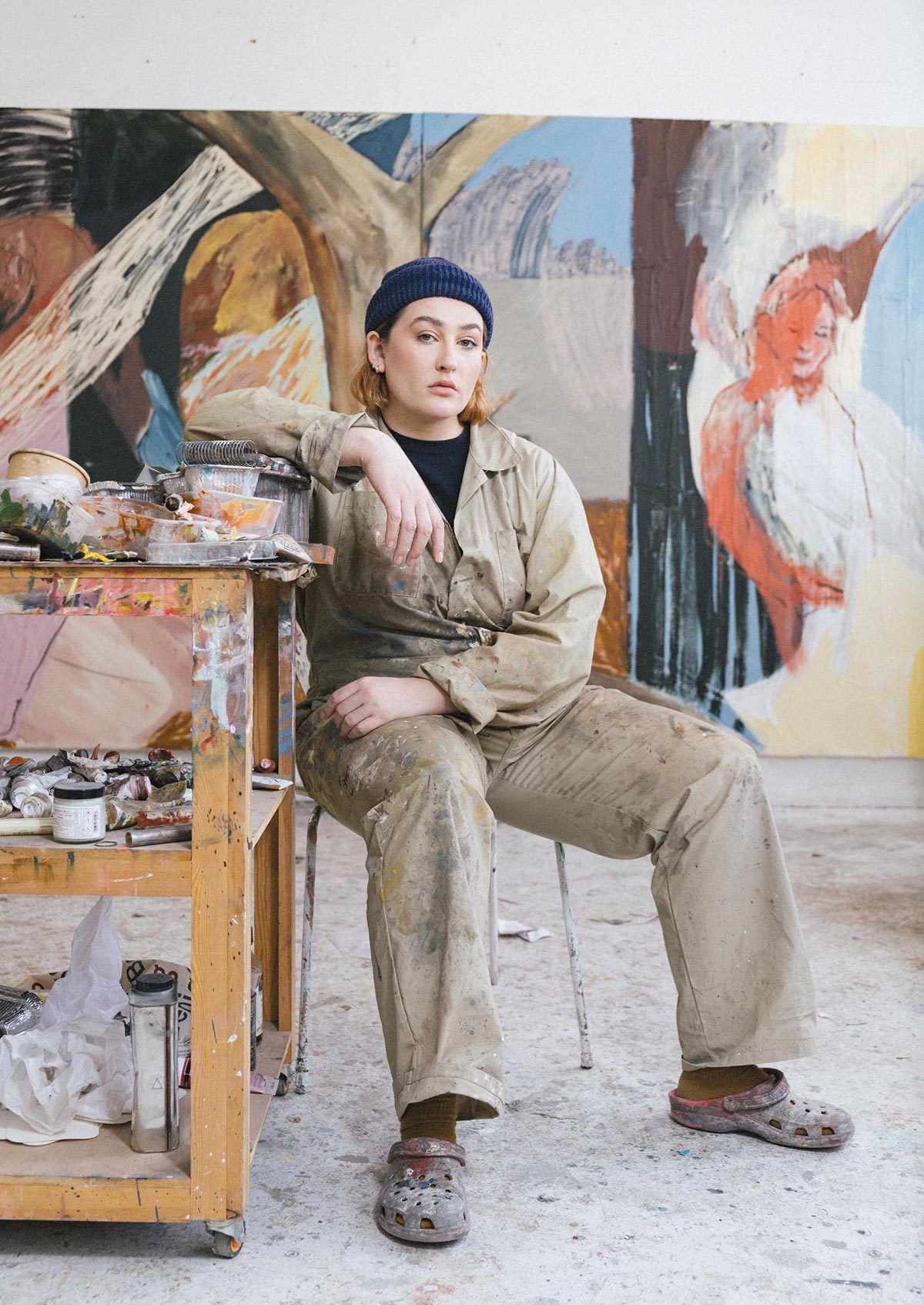
Encounters was an exhibition of new work at the Huxley Parlour Gallery by London- based artist, Emma Fineman. A show that included three media: painting, sculpture and monoprint. It was Fineman’s first solo show. The title, Encounters, refers to a modern hierarchy of images in which the ideas of space, communication and touch—both physical and metaphorical— are contested. Speaking about her work, Fineman says “I am most interested in the gaps and the slippages, places where things don’t always align and that often encourage longer looking.” Huxley Parlour Gallery.
With this exhibition of Emma, we review some of her new works and remember one of our first interviews in the “Artist Diaries” section of our website. We are delighted to meet with her again and turn the original idea of the interview in this magazine into a reality.
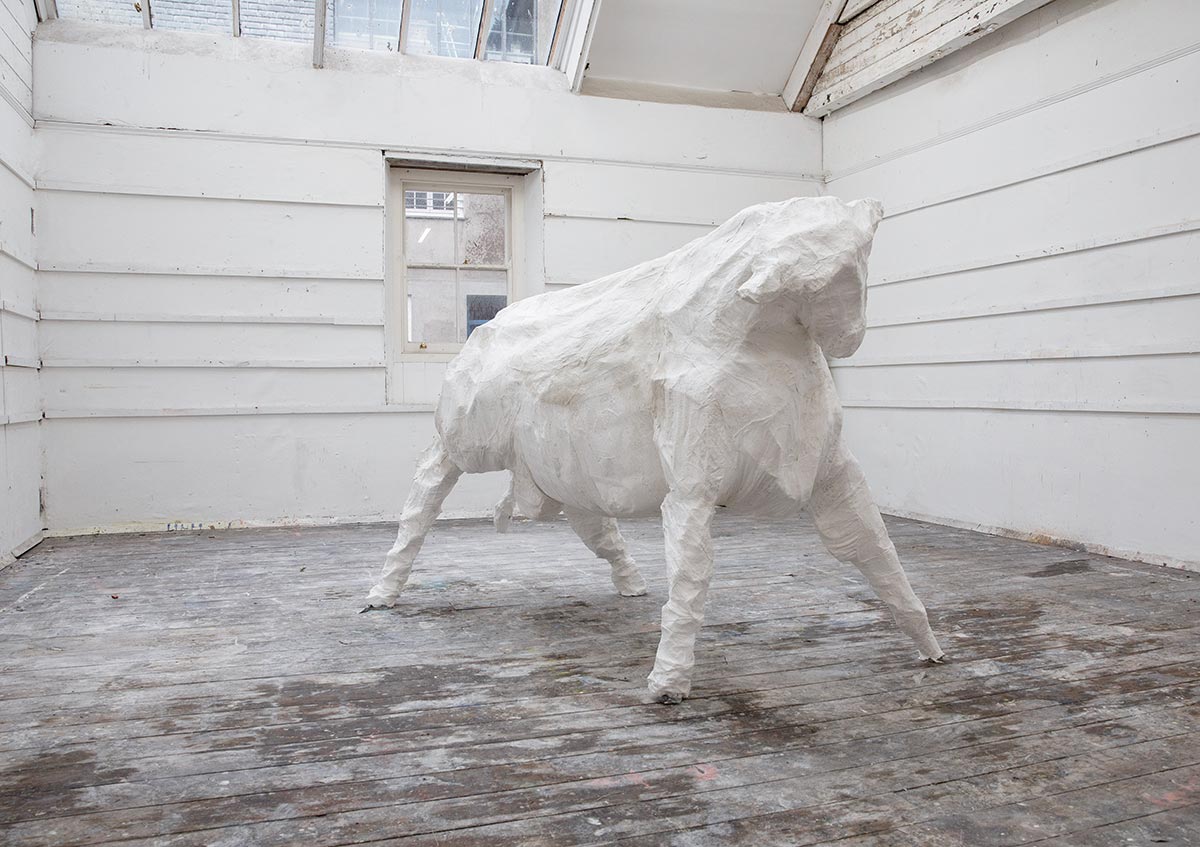
Tell us your story. How did you come to painting?
I have been quite lucky in that my grandmother on my paternal side, my mother and her father are/ were all artists working primarily in painting. Growing up in that environment meant that painting was always an important part of my life. For as long as I can remember, I have considered myself an artist, and painting has felt somewhat inevitable.
Tell us about your style and technique. Any secret you can tell us about?
I think the big secret when it comes to technique is not to aim for style. It took me quite some time to learn that lesson, and I think many artists go through phases of looking at certain things, and that deep love and fascination ends up surfacing in the work. Once the moves and ways of working become more internalized, it becomes easier to let them go.
I think that’s when you begin making your work, not for what it looks like on a surface level, but for what it actually is. When you respond to the paint and the many mysterious ways it lands on the surface, I think the work becomes more alive. It’s becoming easier to spot a fabricated drip, or mark. One thing I’ve been trying over the past year or so has been to use a material that is new in each work. That could mean priming the surface differently or using a new medium. When I do this, I stay active when I work, and it helps me avoid going into auto pilot.
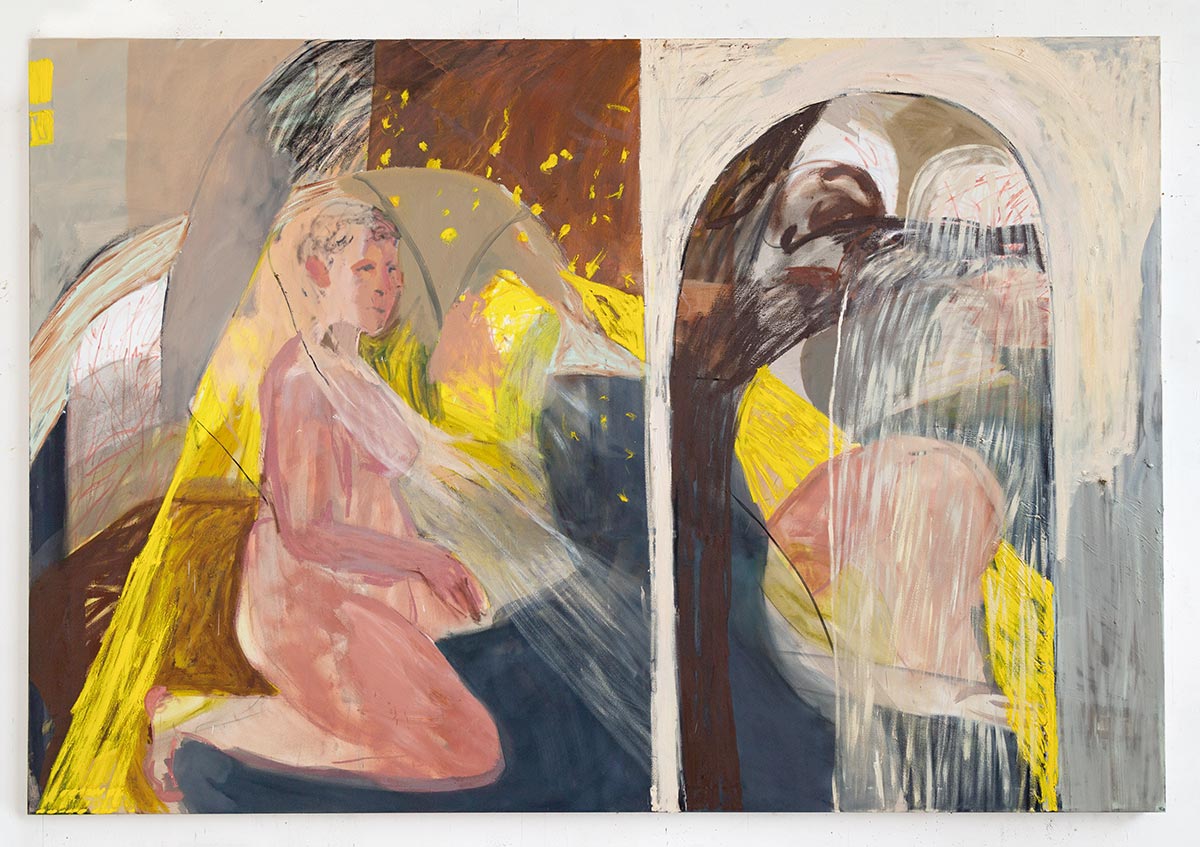
How do you usually start your paintings? With a sketch, a draft, or is it just an improvisation?
I always start with nothing, no drawing, no plan, just an empty canvas. Every decision is built on the last as I go. I used to plan the whole image before I’d even started, and what I’ve learned over time is that the work was dead before I’d even started. I do make drawings in my sketchbooks and works on paper, but these are never blueprints for a painting.
I like to work from memory because it prevents me from illustrating an image. What exists in my memory has already been internalized. It is what remains of a given experience and is my own interpretation of that situation. Though it may be far from the exact reality of what was once there, it is most truthful for me and what I understand of it.
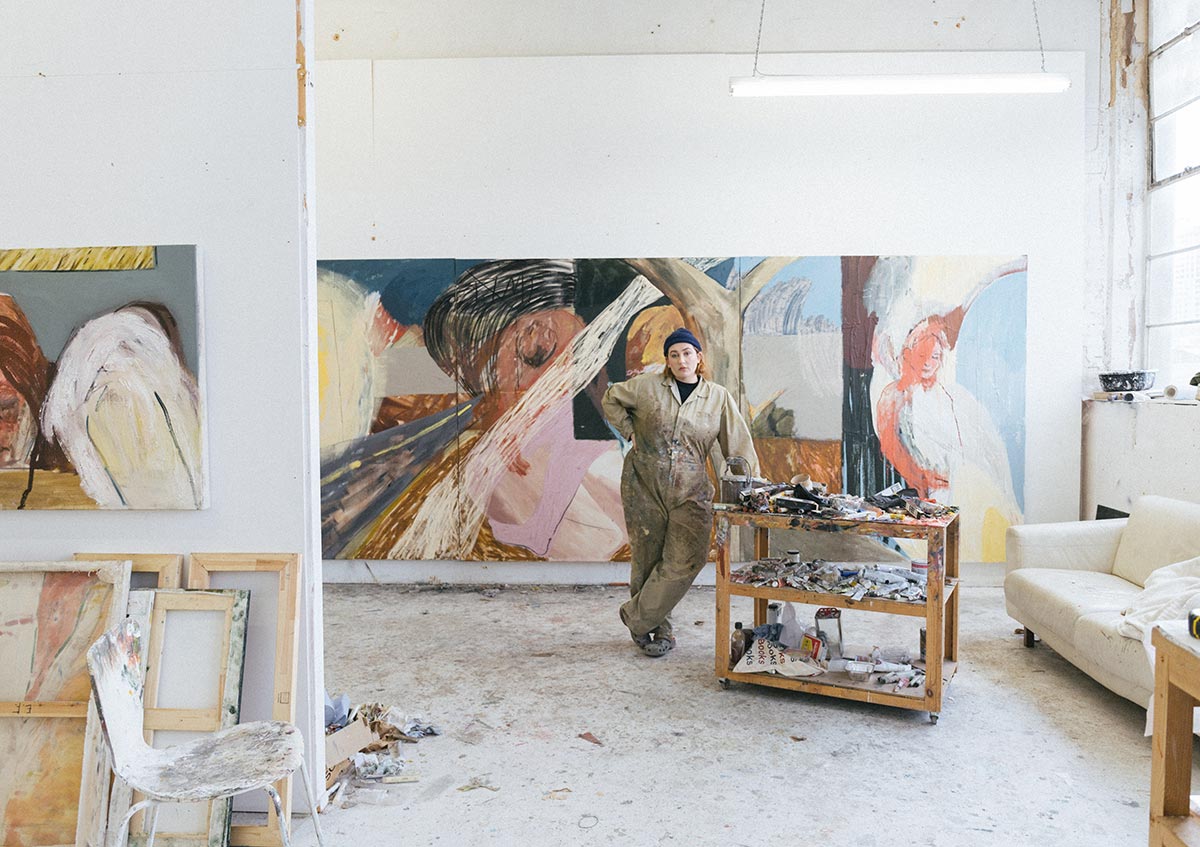
What are your motivational forces?
The most motivating thing for me when it comes to art-making is the feeling of total awe and energy I get when I see brilliant work. It’s that feeling when you go to a show or a museum and something about what you see just explodes your sense of possibility. It’s almost impossible that, given so many stops, so many ways in which these things couldn’t possibly come to be, here they are! WOW. That out of nothing, this was made. It both amazes and encourages me.
What can you tell us about your studio, what kind of place is it?
My studio is often changing. I’ve done a number of residencies in the past several years and am usually adapting to a new environment with each series of works I make. New environments excite me. I’ve just moved into my current studio in London this month, and I’m very much looking forward to seeing how the new space will lend itself to both painting and sculpture. It’s an old factory building with large windows. It can be cold, but the light is very inspiring.
What is art for you?
The most important thing.
